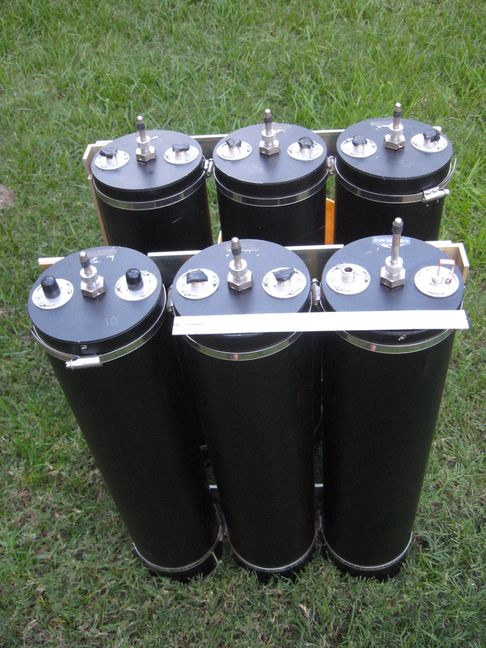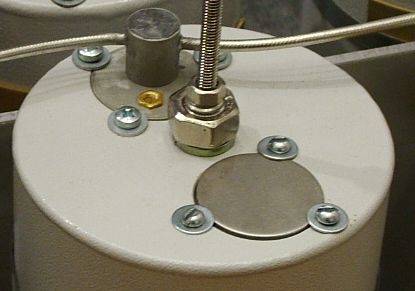 .....
.....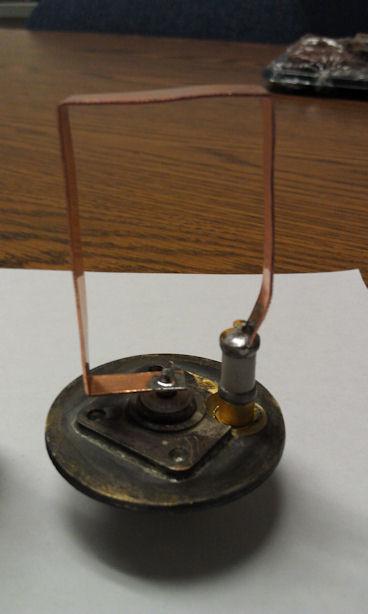
Note: No connectors, hardwired and Gold trimmer.
1) The single connector series loop and trimmer to GND type.
2) The two connector, couple a bit of energy between the coupling loops
with either L or C.
3) The two connector, couple some energy magnetically between loops.
4) The two connector, parallel resonant circuit between connectors.
5) The single connector capacitor divider, with either L or C in the GND side.
As in the 2" heliax duplexer for 6m.
6) The two connector, capacitively coupled at the 'hot' end.
AND, the aperture coupled Band Pass UHF cavities as in the image
Ant_T_IMG_3734b.jpg below.
AND, the Hybrid Ring, perhaps lost in time as it is for a small frequency range only.
Sinclair-F-Series-Hybrid-Ring-Duplexer.pdf circa. 1966
 .....
.....
Note: No connectors, hardwired and Gold trimmer.
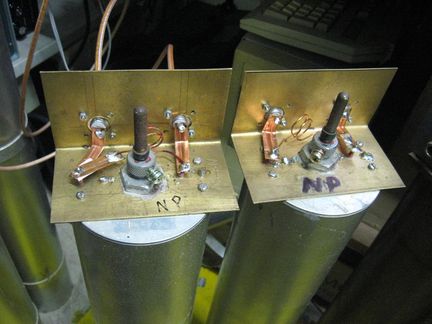 Note phase swap of LHS loop, makes for larger L.
Note phase swap of LHS loop, makes for larger L.
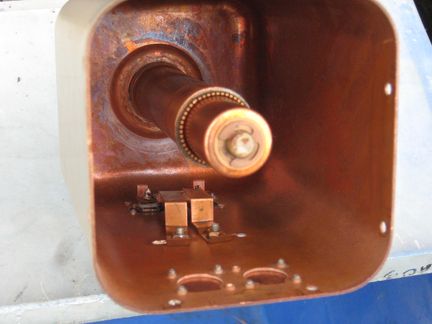 Magnetic coupling.
Magnetic coupling.
Pass then Notch, wire 2x 195mm
Notch then Pass, 2 wires 2mm x 205mm Coil ID 14mm.
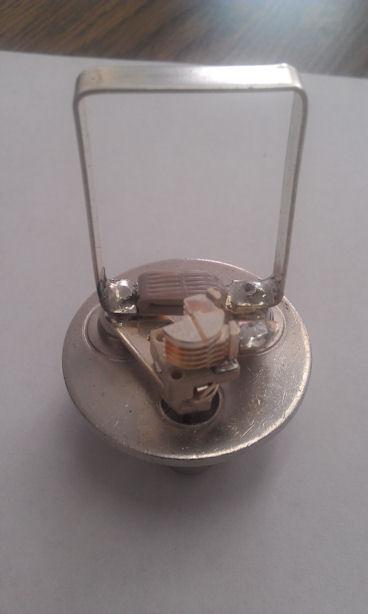 Two connectors parallel resonant circuit between.
Two connectors parallel resonant circuit between.
Three adjustments, cavity plunger, rotate probe assy., adjust cap.
Requires a large aperture into the cavity.
These are really, the best!!
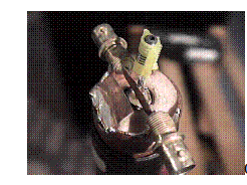 6m duplexer made with 2" heliax. Inductor to GND.
6m duplexer made with 2" heliax. Inductor to GND.
See A 1972 article on 2" heliax as resonators for 6m
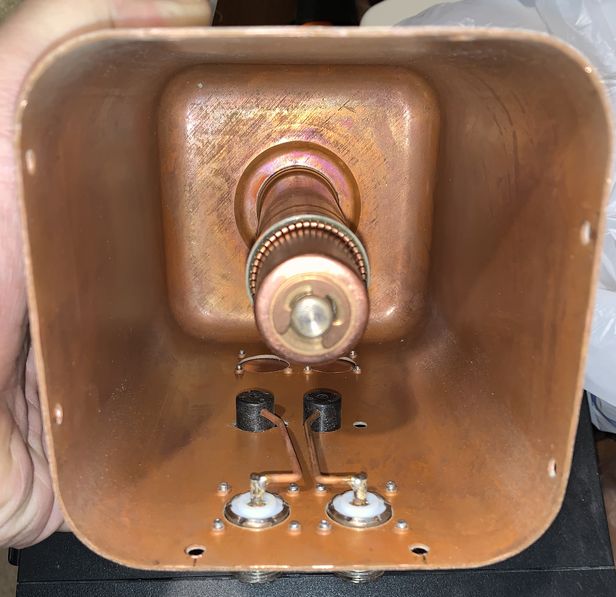 Motorola T1500 UHF
Motorola T1500 UHF
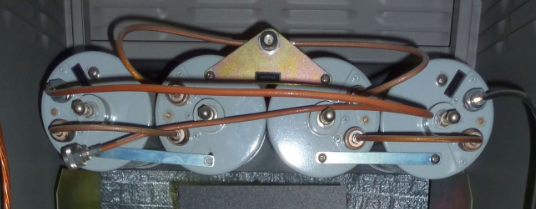 Note the caps between the connectors.
Note the caps between the connectors.
At the notch frequency, types 1 and 5 (above) present a Very Low impedance thus back at the antenna "T" where we need a High impedance as the energy at this frequency is to go straight past, we can use a quarter wavelength line to achieve this.
Type 4 presents a High impedance at the notch frequency so half wave lines are
used to the Antenna "T". Between cavity lines, see Ref (h).
Types 2, 3 and 6, at the Reject Frequency present a High VSWR but neither High or
Low impedance exactly, this is where it gets hard. A Vector Network Analyser is a great tool here. I doubt they had one back in the 1960s. Instead, General Radio Inc. made a constant impedance adjustable line, is 60cm long and adjusts 20cm and they would
have used other known lengths of coax to calibrate it.
The LHS of my picture 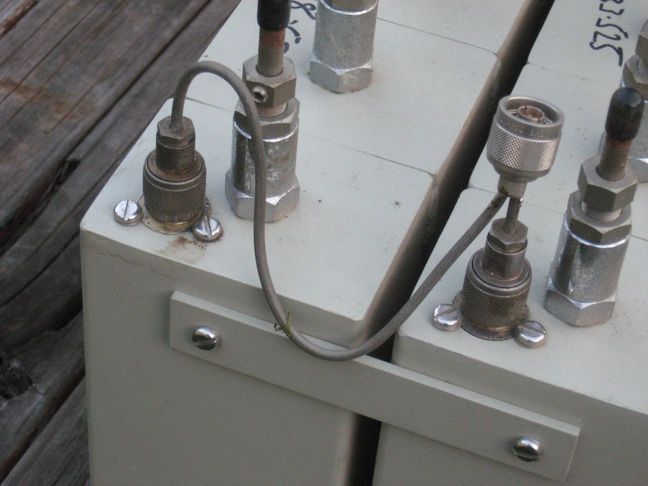 Ant_Tee_IMG_3734b.jpg has an extra half wave of hard-line to
Ant_Tee_IMG_3734b.jpg has an extra half wave of hard-line to
get the lengths right (as best I could).
Between cavity lines
Type 1 (Series to GND) are easy, 1/4 wave. Others can cause interaction between the cavities such
as Type 4.
A Vector Network Analyser should be used at this point. But, can we get away without one with
our choice of cavity type. The BIG question.
So, now you know why some of the coax lengths are not quite quarter wave or half
wave. Particularly where the Rx and Tx chains join, the Antenna T.
Examples, home brew:
Some examples of home-made (type 4) coupling loops for 6" RFS or AEA cavities.
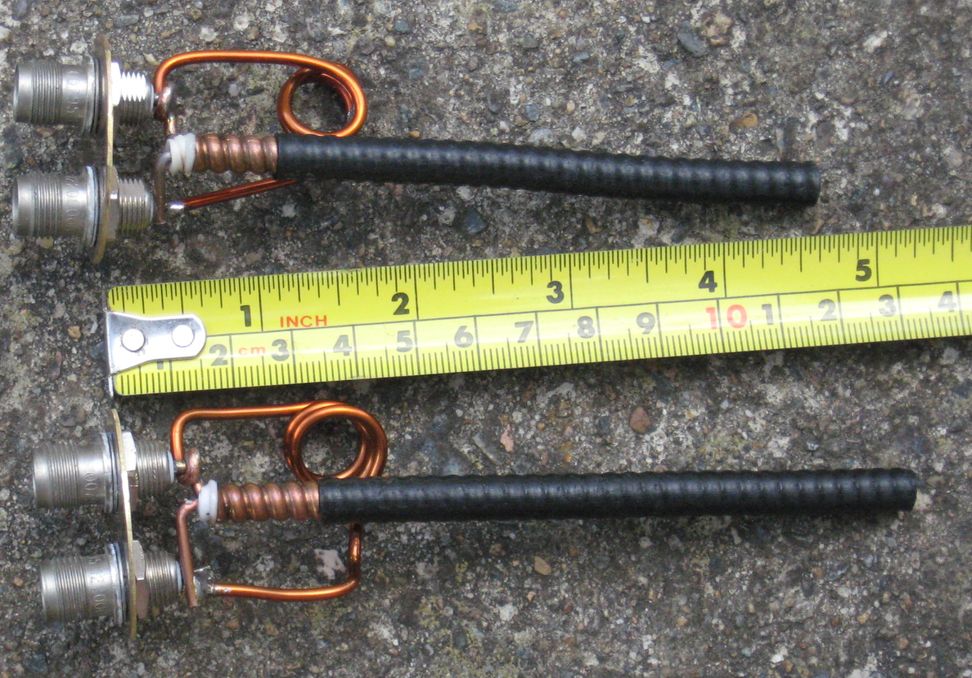 IMG_3733b.jpg TNC connectors
IMG_3733b.jpg TNC connectors
